Author: Liu Hong
Introduction
“Huawei’s first car is coming! The goal is to crush Tesla.” During the Shanghai Auto Show, the HI version of the Beijing Automotive New Energy’s Arcfox Alpha S, equipped with Huawei’s autonomous driving technology, was publicly tested for the first time. After watching Huawei’s autonomous driving video, many industry insiders have highly praised Huawei’s ADS and believe that its technical level even surpasses Tesla’s Full Self-Driving (FSD).
Tesla has many Chinese competitors
Xu Zhijun, Huawei’s rotating chairman, said, “Our team told me that the car with the ‘Huawei inside’ collaborative model can achieve 1000 kilometers of non-intervention autonomous driving in urban areas. This is much better than Tesla.” Su Qing, President of Huawei’s Intelligent Automotive Solution BU and ADS Autonomous Driving Product Line, said, “If Huawei cannot beat Tesla in computers, I think it can close the door and not do it.”
The media also said, “With a large number of deliveries next year, Evergrande can quickly occupy the global market. By then, whether Evergrande Motors can challenge Tesla’s dominant position will also be revealed.” After all, Tesla is the benchmark.
It seems that crushing Tesla is the dream of every active manufacturer in the electric car industry today. Every model that comes out has to benchmark against some Tesla model. This has become a release mode. Even if you don’t say it, the media and netizens will compare it.
The situation in the domestic electric car market is obvious. NIO, Ideal, and XPeng had sales of 43,700, 32,600, and 27,000 vehicles respectively in 2020. Tesla’s annual sales in China are a stunning 499,500 vehicles. It is not easy to crush Tesla! Looking at abroad, the number of new forces in the automotive industry that can really compete with Tesla is probably very small, despite all kinds of hype, it is worthless if there are no cars to deliver.
“Killer” to me is like a cloud
It has been almost 10 years, and car models known as “Tesla Killers” have appeared one after another but have all failed. Car manufacturers around the world continue to launch their entry-level electric cars in the rapidly developing electric vehicle field. With the release of electric car plans by some of the largest and longest-established car companies, and cool, dynamic photos and renderings, who doesn’t want to be a “Tesla Killer” in their heart, pulling Tesla off its throne and leading the industry? It’s easier said than done!
A “killer” must be able to make a competing model obsolete, causing it to disappear from the market, but this almost never happens. Even if a car is poorly sold or has declining sales, someone will eventually buy it, no matter how bad, unsuitable, or inefficient that car is.
The fact is, all cars labeled as “Tesla Killers” always fall short. Although the newly released cars are dazzling, will they really make Tesla reconsider its future model plans or redesign its existing models? They won’t.Tesla is a leader in the field of electric cars. Love it or hate it, currently no one can truly compete with it, and the only real threat to Tesla’s momentum is vaporware, the products that are promoted before they are developed and may never actually come to market. For years, some automakers have been talking about launching incredible electric cars with outstanding features such as towing capacity, water depth, and 0-60 mph speed…But let’s be honest, how many times have these promised electric cars actually been delivered? This includes car companies with decades or even centuries of experience.
In fact, transparency, not hopeless promises, is the key to winning the loyalty of the electric car fan community. Tesla owners and fans are very dismissive of competitors, and this is no secret. And they cannot be blamed for that. Although Tesla is not perfect and it may eventually fall from its throne due to many problems such as supply constraints, inaccurate timing, production bottlenecks, and manufacturing license delays (especially in Europe), it rarely misses when it comes to its cars. In particular, many of the vehicle specifications released by Tesla are accurate, even if some of the specs may look weird, Tesla usually stands by its promise.
On the other hand, the same cannot be said for its “Tesla killers” competitors, who may add flashy names, specifications, and features to their cars, but they either fail to meet expectations or are delayed for a long time until production infrastructure is ready.
Believe it or not, some companies producing “Tesla killer” models wouldn’t even plan to build electric cars if it weren’t for Tesla. The reality is that it was Tesla that inspired their design ideas, and without such planning or production, these companies may be eliminated from the market in a few years, especially as electric cars take away market share from gasoline engines.
Father of the Model S: Lucid Motors
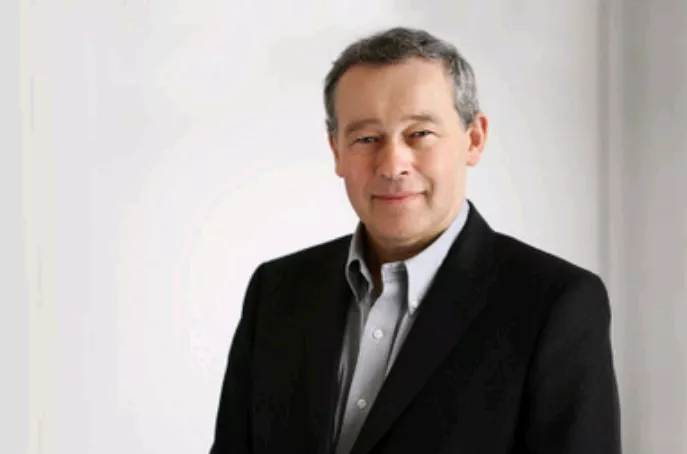 One of the co-founders of Tesla, Peter Rawlinson, who had previously served as the chief engineer of the Tesla Model S and the vice president of engineering at Tesla, founded Lucid Motors in 2007. Industry insiders believe that the Lucid Air he has created could be a great competitor to the Model S, as Rawlinson’s idea of building a boutique car was not adopted by Musk when developing the Model S. He has stated that he thoroughly redesigned the Model S, but Musk claims that the prototype was already completed before Rawlinson’s arrival, although Rawlinson did contribute to the body/chassis engineering of the Model S.
One of the co-founders of Tesla, Peter Rawlinson, who had previously served as the chief engineer of the Tesla Model S and the vice president of engineering at Tesla, founded Lucid Motors in 2007. Industry insiders believe that the Lucid Air he has created could be a great competitor to the Model S, as Rawlinson’s idea of building a boutique car was not adopted by Musk when developing the Model S. He has stated that he thoroughly redesigned the Model S, but Musk claims that the prototype was already completed before Rawlinson’s arrival, although Rawlinson did contribute to the body/chassis engineering of the Model S.
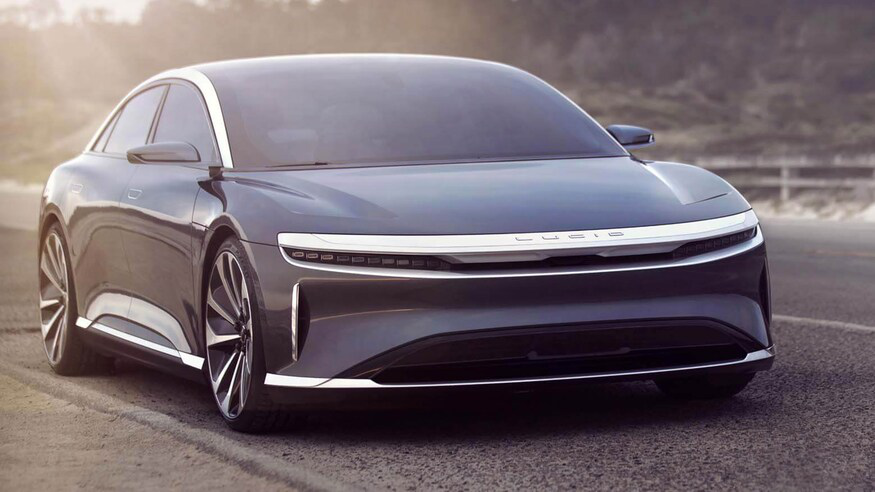
Recently, as the CEO of Lucid, Rawlinson tested the Lucid Air on the streets of Manhattan in preparation for deliveries later this year. The model was released in 2017 and was benchmarked against the Mercedes S-Class and the Tesla Model S. Rawlinson is a person who has always maintained high standards for products and pursues Swiss watch-like quality. He is meticulous about everything from blind spot pillars to the quality of dashboard buttons.
The top of the Air series will be the flagship Dream version, which comes equipped with a 113 kWh battery pack and electric motor that generates 1080 horsepower, and has a range of 517 miles (832 km), which is the highest of all similar models. One thing is for sure – this luxury car has disruptive power, as it is the perfect combination of battery performance and comfort. The high-end version of the Air is 17% more energy-efficient than Tesla’s models, and can travel longer distances with less battery consumption. Thanks to its 900-volt architecture, the car can charge for 20 minutes and travel 300 miles. According to Lucid, its peak charging speed is 2 miles per minute.
Lucid’s attitude towards electric vehicles is completely different from its competitors. While many people are looking ahead to the “big picture” of the automotive industry in the next few years, Lucid is focused on the present. Rawlinson’s practical approach is surprisingly similar to that of his former boss, Musk. He drove the company’s first car on the busiest streets in the world, working to make it more perfect. The Air is a highly customizable model with four different configurations to choose from and is bound to attract a variety of buyers.The company executives also revealed that Lucid is developing an “ESS” series of stationary energy storage systems for home, commercial, and grid-scale usage. This strategy reminds people of Tesla’s photovoltaic industry. The company’s factory in Phoenix, Arizona is nearing completion, with an initial car production capacity of 34,000 vehicles per year expected. The company will also consider building factories in China.
Rawlinson agrees with Musk’s point of view: although cars are necessities, they should be fun. Otherwise, they wouldn’t have all the features that consumers love. For example, Tesla has a “fart” mode when the turn signal is turned on, as well as “Sentry mode” and “Dog mode,” which are funny and humorous.
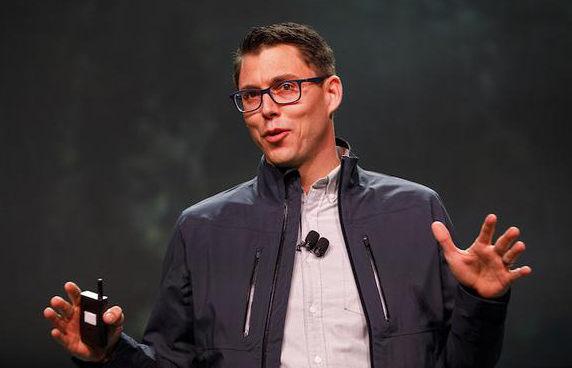
In November 2020, Rivian Automotive, a domestic electric vehicle and autonomous driving start-up company in the United States, announced that its first edition R1T had sold out. The R1T is the world’s first all-electric pickup truck, neither made by Ford nor Tesla. Because traditional host manufacturers such as Ford and Chrysler have claimed that they will never produce this type of pickup truck, at most, they will only have hybrid models.
In January of this year, this low-key company, which was invested by Amazon and Ford, completed a new round of financing of US $2.65 billion, becoming the most well-funded electric vehicle start-up company ever.
At the end of March, it was reported that Tesla’s long-awaited electric pickup truck, Cybertruck, might start production in the Austin Super Factory in June, while Rivian’s first edition R1T would go into mass production in June.
R1T’s traction rating and ample battery life are unmatched by some electric multi-purpose vehicles produced in Europe. The reason why Rivian is so popular, especially in the United States, is first and foremost its extremely likable positioning: an American electric vehicle company that specializes in manufacturing electric pickup trucks. Its first two models, R1T and R1S (SUV), have excited American car enthusiasts and made Tesla feel uneasy. Although the latter’s sharply designed Cybertruck later made people realize that Musk was not joking!
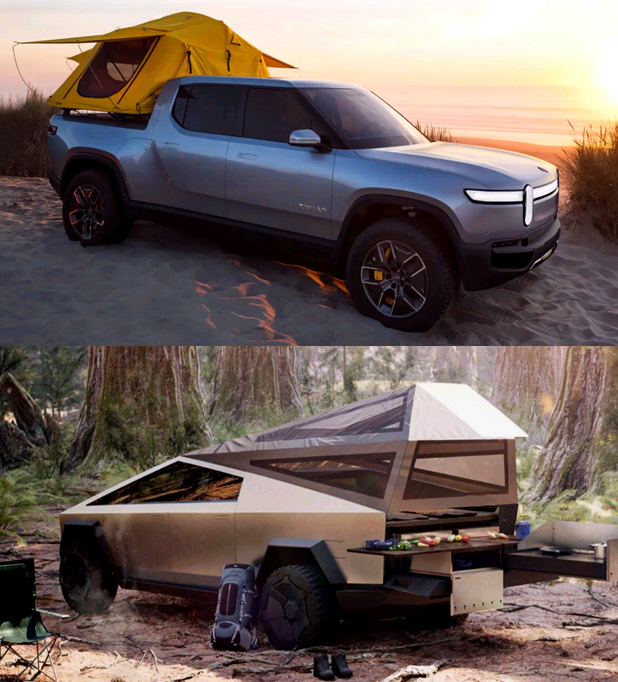 Over the past decade or so, Rivian founder and CEO RJ Scaringe has always insisted on keeping the start-up company private and at a distance from the public eye. During an interview, he expressed his admiration for Tesla, the “pioneer” in electric cars, with a smile on his face, saying that his current company uses a Tesla Model X. Maybe it was his low-key social skills and smooth interpersonal relationships that won him the favor of old-school entrepreneurs and investors, who have always been willing to invest but reluctant to let go. That’s what made Rivian the “mysterious rival” of Tesla in the coveted North American truck market.
Over the past decade or so, Rivian founder and CEO RJ Scaringe has always insisted on keeping the start-up company private and at a distance from the public eye. During an interview, he expressed his admiration for Tesla, the “pioneer” in electric cars, with a smile on his face, saying that his current company uses a Tesla Model X. Maybe it was his low-key social skills and smooth interpersonal relationships that won him the favor of old-school entrepreneurs and investors, who have always been willing to invest but reluctant to let go. That’s what made Rivian the “mysterious rival” of Tesla in the coveted North American truck market.
Recently, people in Palo Alto, California saw Rivian R1T pickup trucks equipped with LiDAR devices to support its Driver + assisted driving system. As early as the unveiling of the R1T pickup and R1S SUV in 2018, Rivian stated that the two LiDAR sensors were placed under the “sports arena” headlights of the trucks and SUVs. Recently, Rivian told the media that its Driver + system uses 10 external cameras, 1 internal camera, 4 corner radar sensors, 1 forward-facing radar sensor, and 12 ultrasonic sensors for 360-degree coverage. When asked if the LiDAR sensors would still be installed on the R1T and R1S, Rivian declined to comment. Perhaps like Tesla, it has found some kind of purely visual solution?
Not at all. Although they may all be cameras, Rivian clearly uses dual cameras that Tesla has not yet placed in its cars. In the minds of many people, only luxury cars have dual cameras. Dual cameras must be more accurate in measuring distance than single cameras, just like human eyes. Covering one eye makes it difficult to judge distance. However, the use of dual cameras requires a lot of computing power.
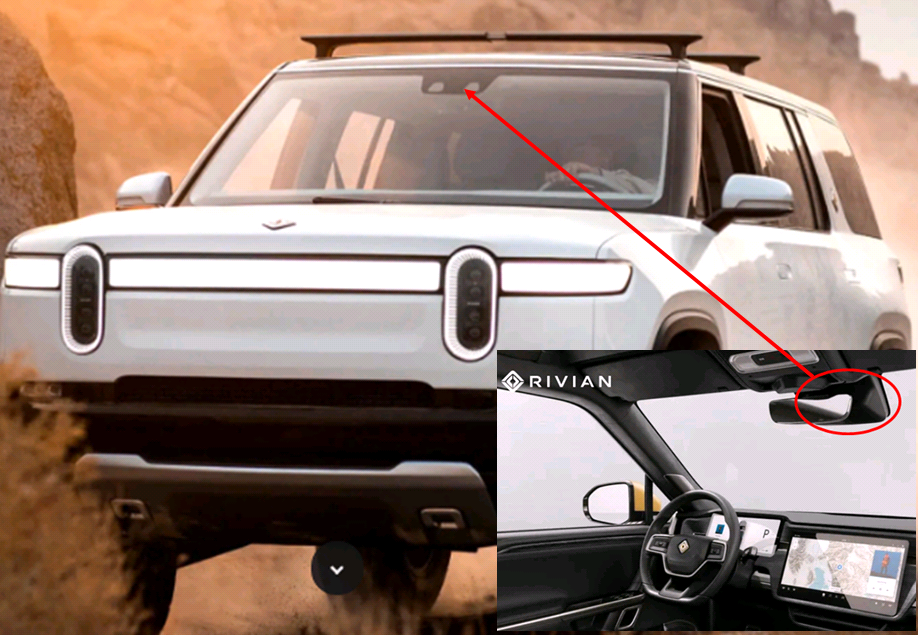
In March, Rivian also announced that it plans to install more than 13,500 charging stations in the US and Canada by the end of 2023, targeting both its customers and the public. This is different from Tesla, whose 20,000 charging stations are exclusively for Tesla owners. Rivian aims to beat its competitors with its Rivian Adventure Network, a network of DC fast charging stations that will be located on highways and major roads, as well as at coffee shops and stores, and even SUV adventure sites.
The release of the R1T pickup truck and R1S SUV coincides with President Biden’s plan to build over 500,000 new electric vehicle charging stations by 2030. This move will help Rivian win over American users.## Competition Pattern Has Not Formed
The emerging new car makers abroad, who are still making noises, only have two companies that are about to deliver their cars. As for domestic companies, everyone knows who they are and they are all under everyone’s noses. However, one thing must be mentioned, there are hardly any companies, whether domestic or foreign, that can lay out their global strategies like Tesla. Therefore, the competition pattern has not yet formed and it is not enough to make Tesla feel rushed.
This article is a translation by ChatGPT of a Chinese report from 42HOW. If you have any questions about it, please email bd@42how.com.